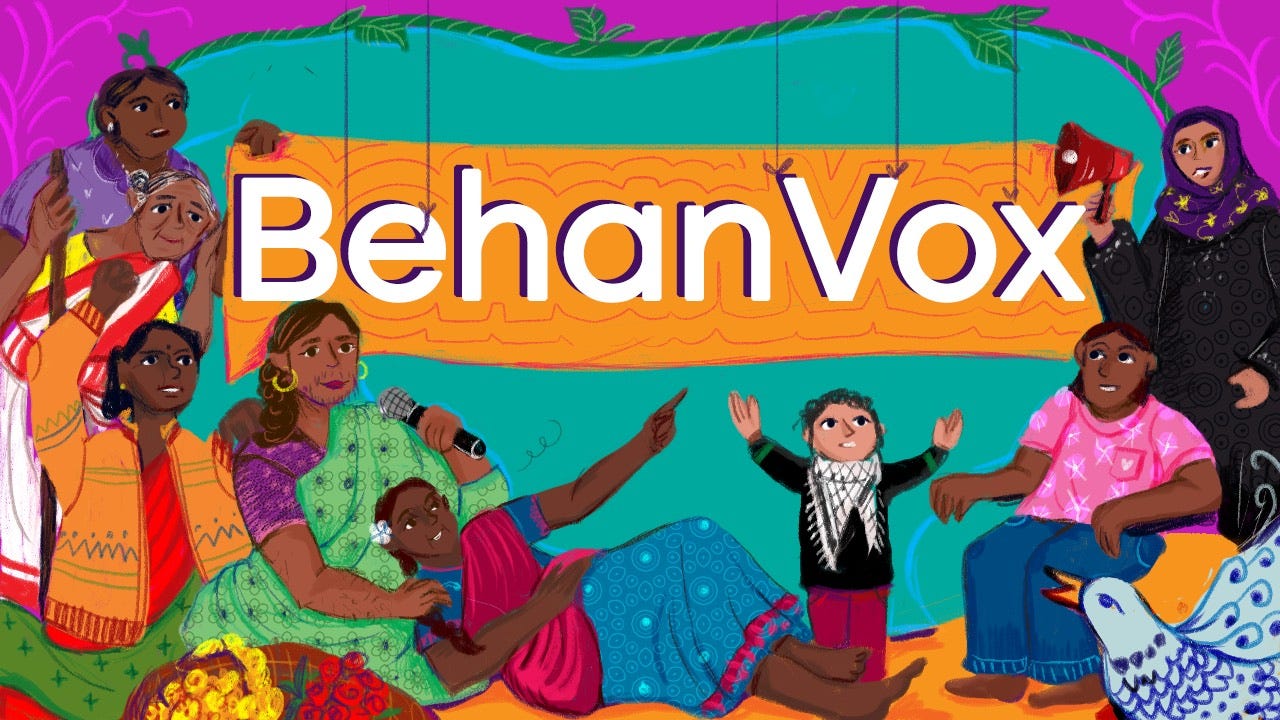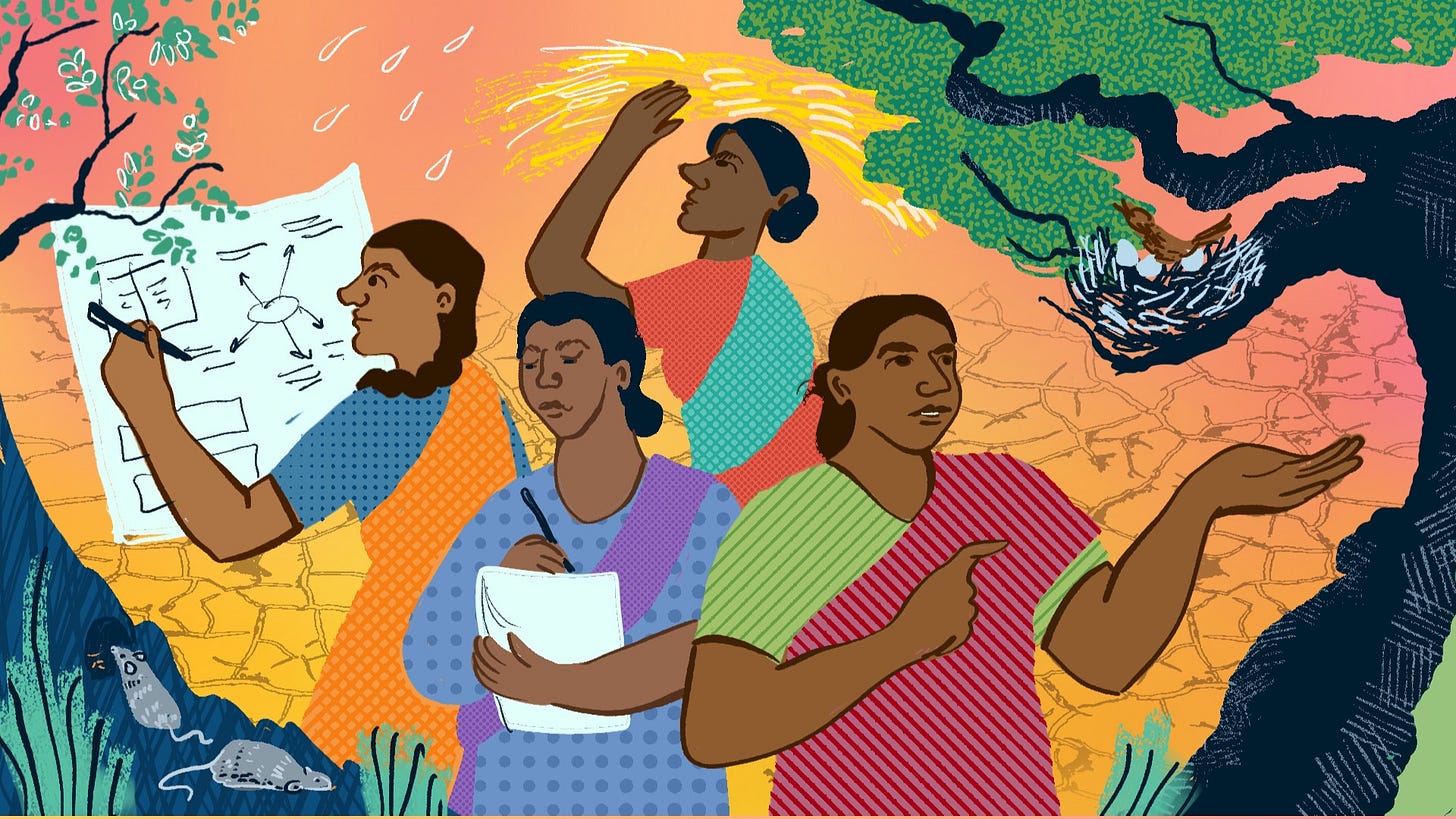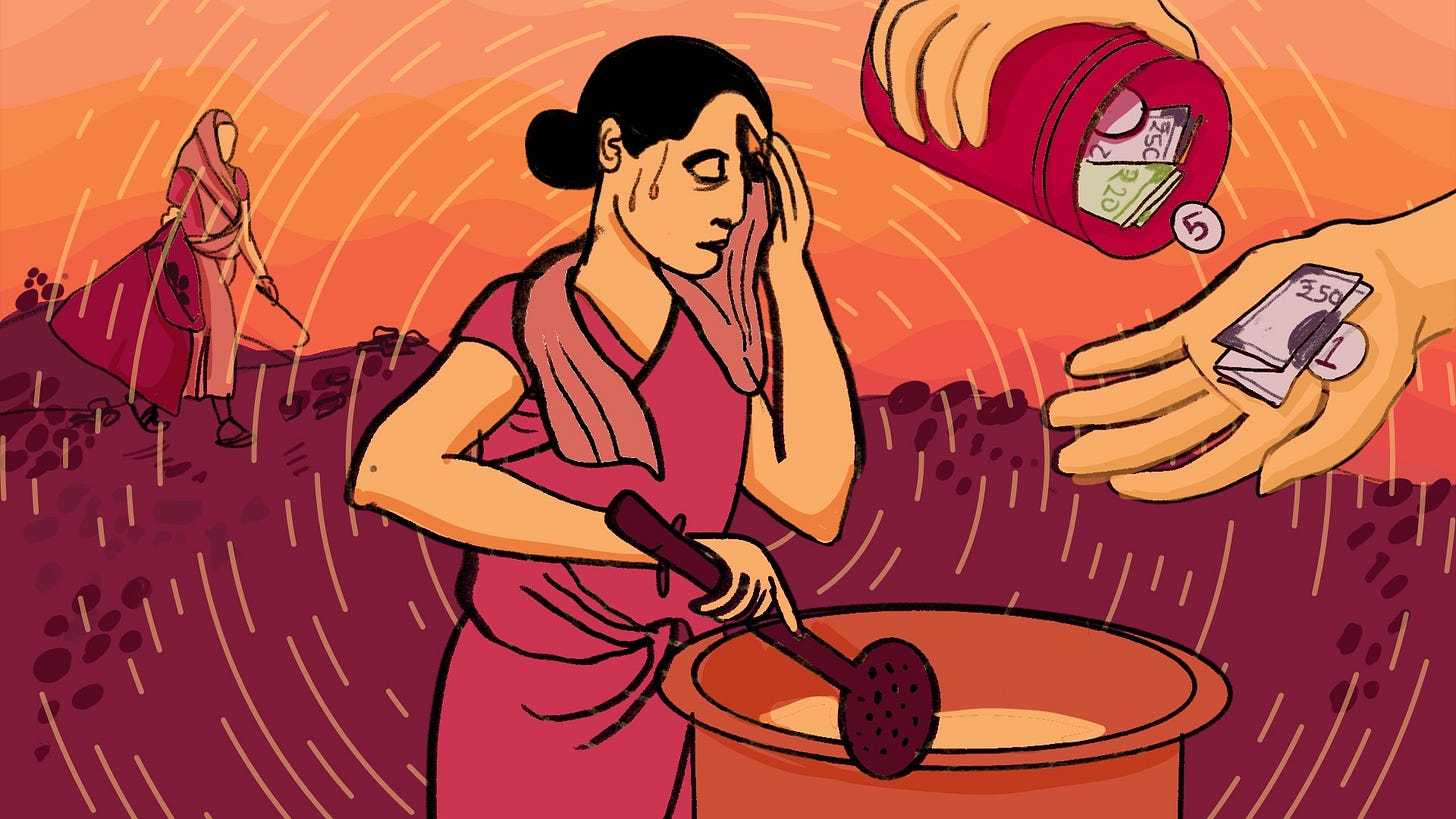Where to Find Verified Voices of Peace
This week in BehanVox: heat-related productivity losses, the name and symbol behind Operation 'Sindoor', a gender protest against the new Pope, and more
Our weekly newsletter brings you our top stories, gender news from the world, and our team’s reading recommendations.
Hello and welcome to BehanVox.
You could almost hear the collective gasp of relief last evening as India and Pakistan pulled off from the brink of a calamitous conflict after a ceasefire. News poured in overnight of cross-border clashes — most likely due to imperfect and delayed communication — that caused more loss, but both sides seem committed to holding on to peace. We could argue endlessly about who hit out first, who hurt who the most, who downed how many missiles and drones and aircraft and where but all that the rhetoric does is drown out the reality – that a war can only be a terrible tragedy. Even the short-lived hostilities of the last four days claimed a disputed number of lives on both sides of the border, throwing the lives and livelihoods of vulnerable districts and states into disarray and spreading a pall of anxiety, fear, and isolation over their nights. As feminists have forever argued, war is a masculine enterprise advancing the military industrial complex as well as patriarchy.
One of the most appalling aspects of how we dealt with the crisis was most of the media coverage around it. Manufactured, dangerously provocative content of the worst kind was being circulated, and it was up to the reader and viewer to sift through the deluge of misinformation and figure out the truth. Television news channels screeched hysterically; the internet could not be bothered with fact checks and newspapers read like press handouts.
To help you make sense of the ongoing situation, we collated a handful of reliable news sources that we ourselves follow to bring you credible updates and responsible reportage. We are overwhelmed with the response to it and we hope that you can continue to bank on these sources for balanced, sane news and views. You can find the list here.
This week we brought you a lovely story from the depths of the water-starved Marathwada district where climate change is intensifying heat spells leaving villages looking like desertscapes. Farming is increasingly threatened, as is food and security. The Jal Jeevan Mission that is supposed to bring water to every tap in the country has not managed to ease the Marathwada crisis.
Since the very severe drought of 2015, which set off a cyclic crisis that has yet to end, the situation has worsened in Marathwada. It has claimed the lives of thousands of farmers and pushed entire families to migrate. In 2016, the water scarcity was so severe that water had to be transported by train from Mumbai to Marathwada.
As is often the case, it is the women who bear the heaviest burden of the crisis: managing drinking and household water, running households on reduced income, ensuring food security for the family, and handling the health impacts of the drought.
It is not surprising then that it took a group of women from Dharashiv district to proactively work on drought resilient techniques of farming and living. In the midst of this a group of women teamed up to go back to indigenous practices of forecasting drought.
One of their initiatives is a set of traditional indicators that villagers have always believed foretell an impending drought. Are the rodents storing more grains than usual? Are the birds building higher up on trees? Have the summer birds not put in an appearance yet? Or the tamarind delayed fruiting? Many of these have logical and scientific explanations to them backed by wisdom that comes from experience. Some do not. These indicators are now being widely shared through WhatsApp by the women in the village along with tips on climate-resilient farming practices.
Using these, the team has formulated ideas for drought preparedness measures with women farmers who themselves suggested solutions. Growing certain kinds of dry resistant vegetables, preparing and storing preservable dehydrated dumplings and fries. And storing fodder for animals and foodgrains for the household when a drought is impending.
The group is also trying to pull more women into cultivating a piece of land owned by their family and growing vegetables, greens, and pulses on it. By growing vegetables like eggplant, pumpkin, tomatoes, chilies, cluster beans, okra, drumsticks, spinach, and onions, and pulses like pigeon peas, black gram, green gram, and chickpeas, they saved about Rs 12,000–15,000 annually on vegetable and pulse expenses.
Read our story here.
What happens when rising heat leads to income loss for workers? Is there any way loss of hours or productivity can be calculated? Can this loss be compensated? This is particularly concerning for home-based workers, textile workers or even ASHA workers, productivity and income are directly connected because they engage in target-driven, daily wage labour. Shreya Raman raises these questions this week.
The March of 2022 was the hottest-ever to be recorded since 1901 when the authorities began collecting data. That year, 90% of the women working in the informal sector reported an income loss of 30-50% depending on what trade they belonged to, as per a SEWA estimate.
Despite years of studying the loss of productivity due to heat, researchers are struggling to build evidence. A big reason for that is how economists define productivity loss. They focus mostly on how heat impacts the economy and its outputs. And this economic approach does not have the space to document the complex nature of impact on workers. Nor does this approach count care work.
Read our analysis here.
Name And Symbol: When the government launched its operation against Pakistan last Wednesday as a measure of retaliation against the unspeakable horror of the terrorist act in Pahalgam, it opted to name it ‘Sindoor’. The reference is to the killing of men in front of their wives and families and the abiding image of Himanshi Narwal sitting stunned by her husband’s body. Feminists however have argued (here) against the symbolism that places the emotional onus of the operation squarely on women.
Pink Smoke: “Just hours before the "princes" of the Catholic Church gathered in the Sistine Chapel to elect a new pope, members of the Women's Ordination Conference lit pink smoke flares on a nearby hill in protest at rampant gender inequality in the Church,” reports France24. "A woman’s place is in the conclave," said Kate McElwee, executive director of Women’s Ordination Conference. The pink smoke event was held on a hill behind the Vatican.
Manifesto on women’s work: In NK Krupskaya’s first pamphlet ‘The Woman Worker’, she delves into the situation of women in Russia. Krupskaya penned this while she was in exile in Siberia.
The digital age: Jeff Horwitz, for The Wall Street Journal, considers the concerns of how chatbots on Instagram, Facebook and WhatsApp are empowered to engage in ‘romantic role-play.’
Ethics of reading: In The Yale Review, Namwali Serpell and Maria Tumarkin consider the fraught nature of writing and reading.
Thread on tradwives: In an interview, anthropologist Kristen R Ghodsee examines the tradwife phenomenon, and how the romanticised bygone gender regime reflects larger systemic pressures.
Mobilising movements: Naomi Klein and Astra Taylor explain, in The Guardian, how strong movements need to be built to fight the supremacist ideas of the far right.
Want to explore more newsletters? In Postcards, we send you missives on the places, people and ideas that brought Team BehanBox joy. Our monthly offering Postscript invites you, the reader, into our newsroom to understand how the stories you read came to be – from ideation to execution. Subscribe for more.














